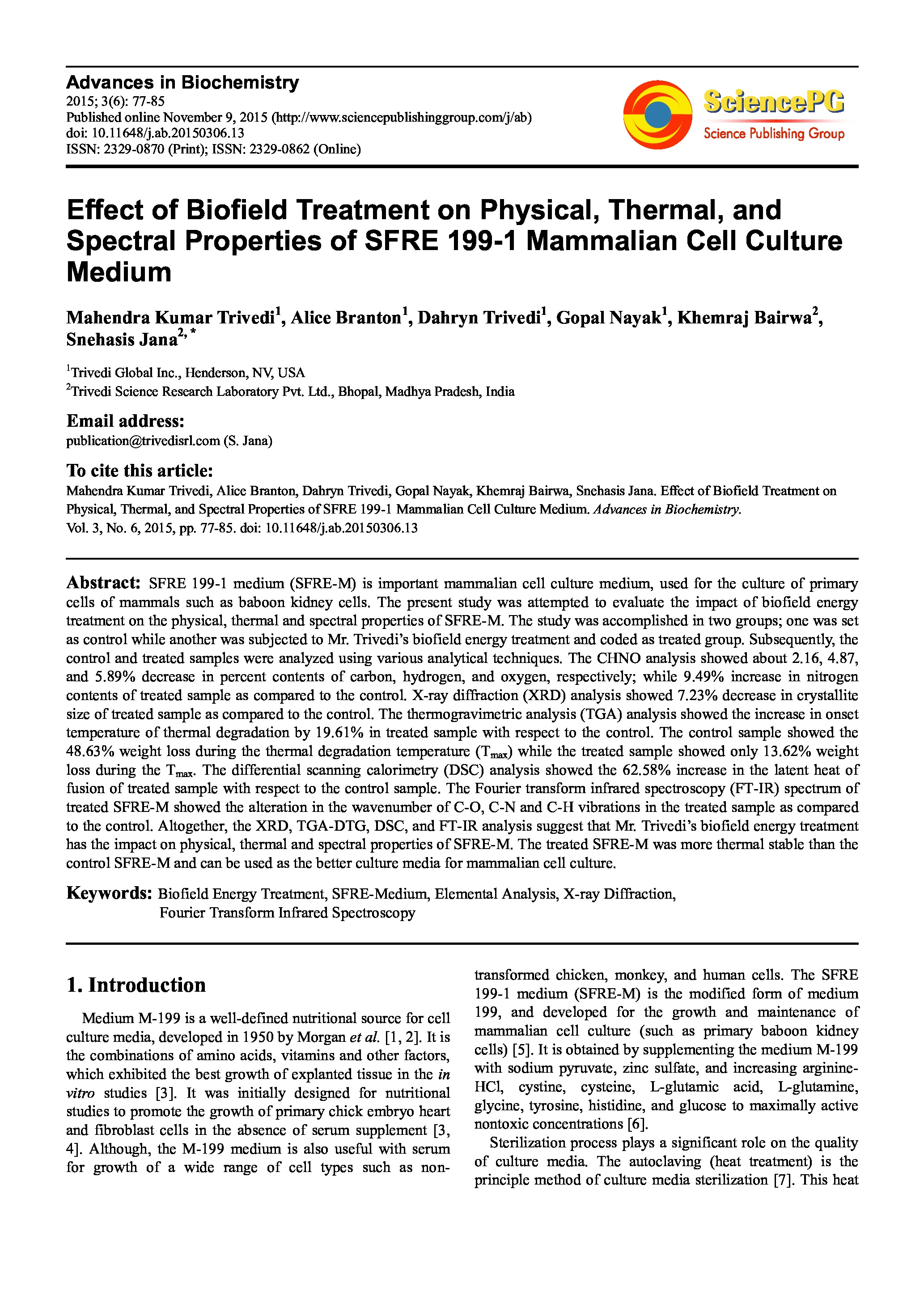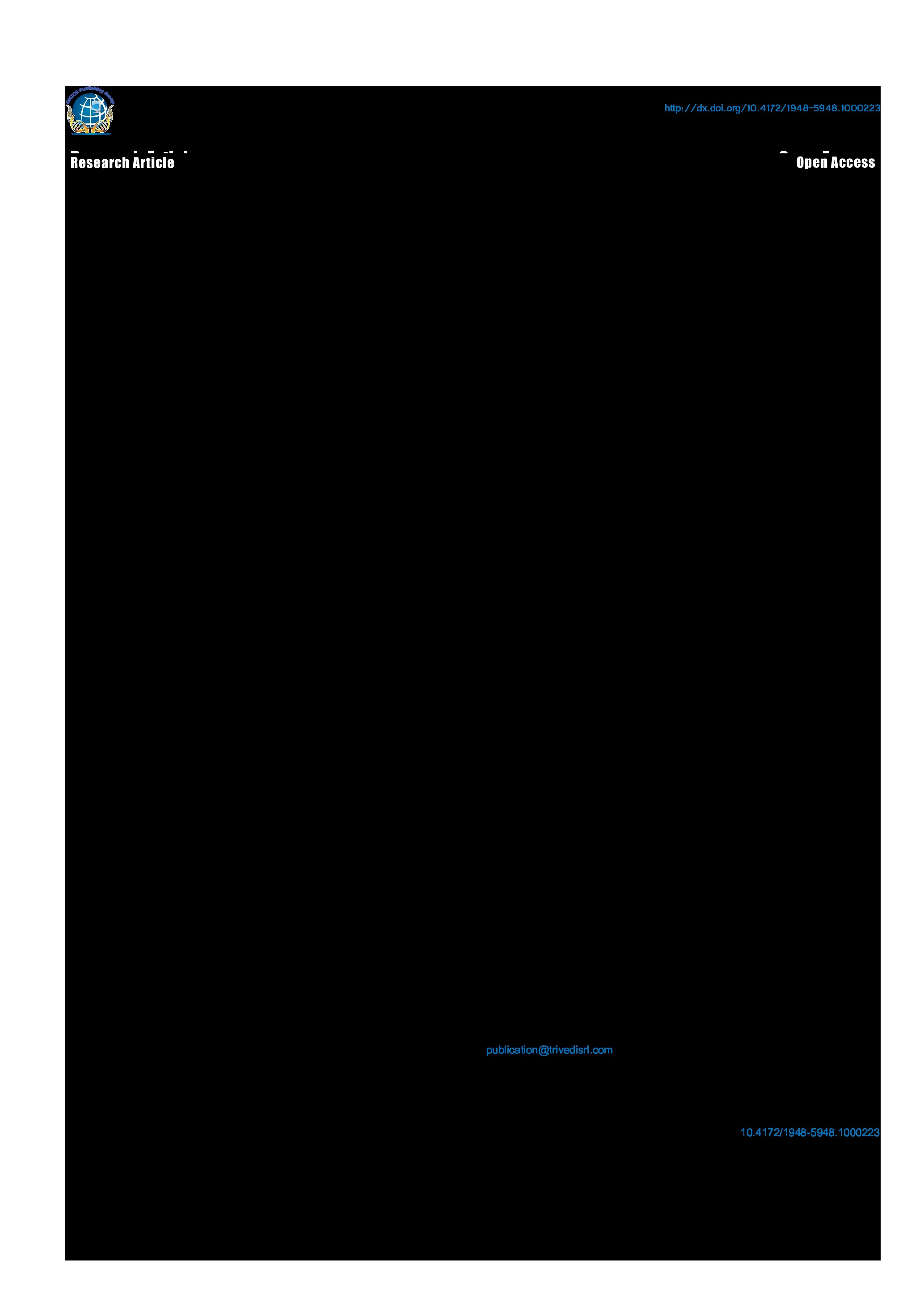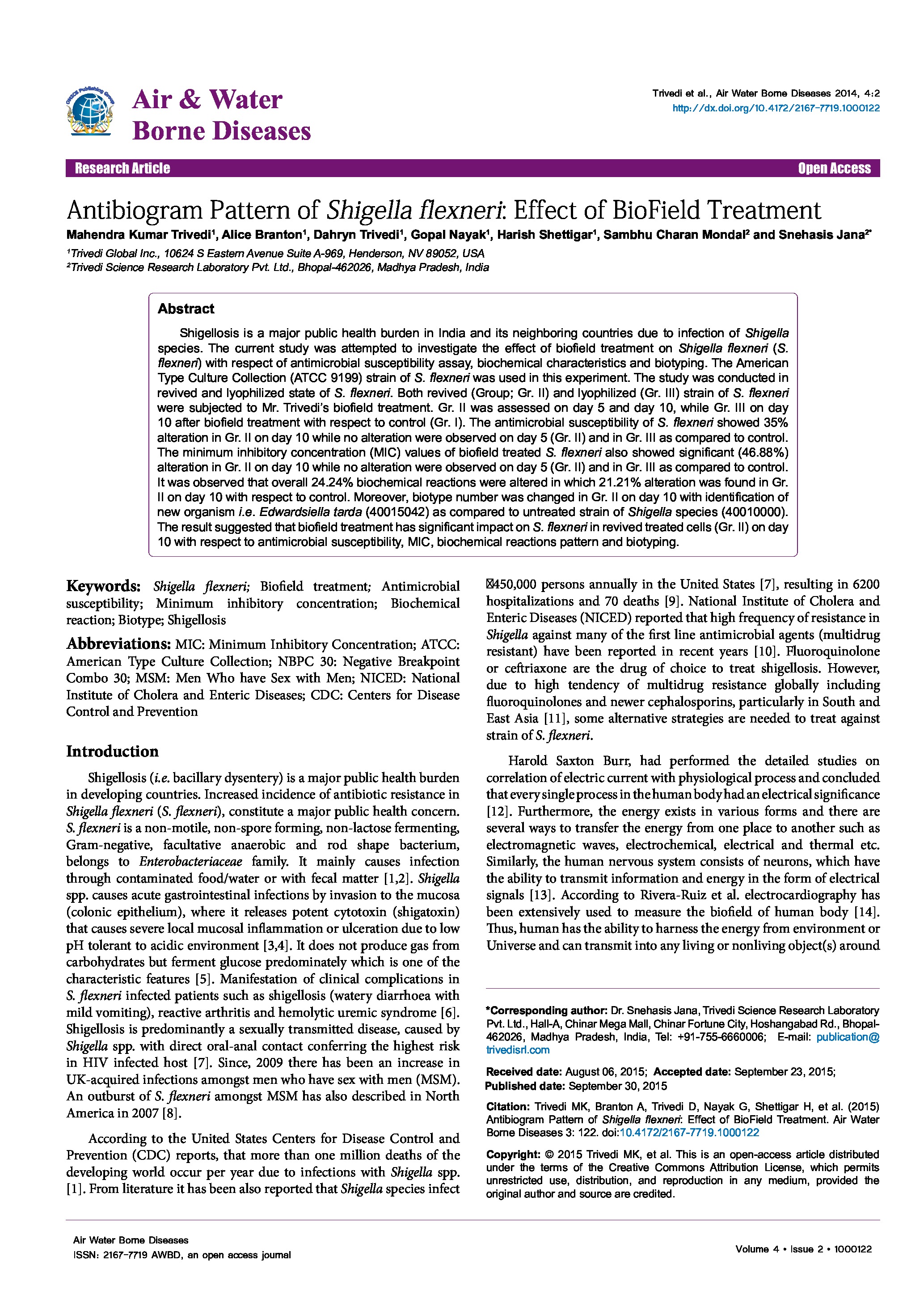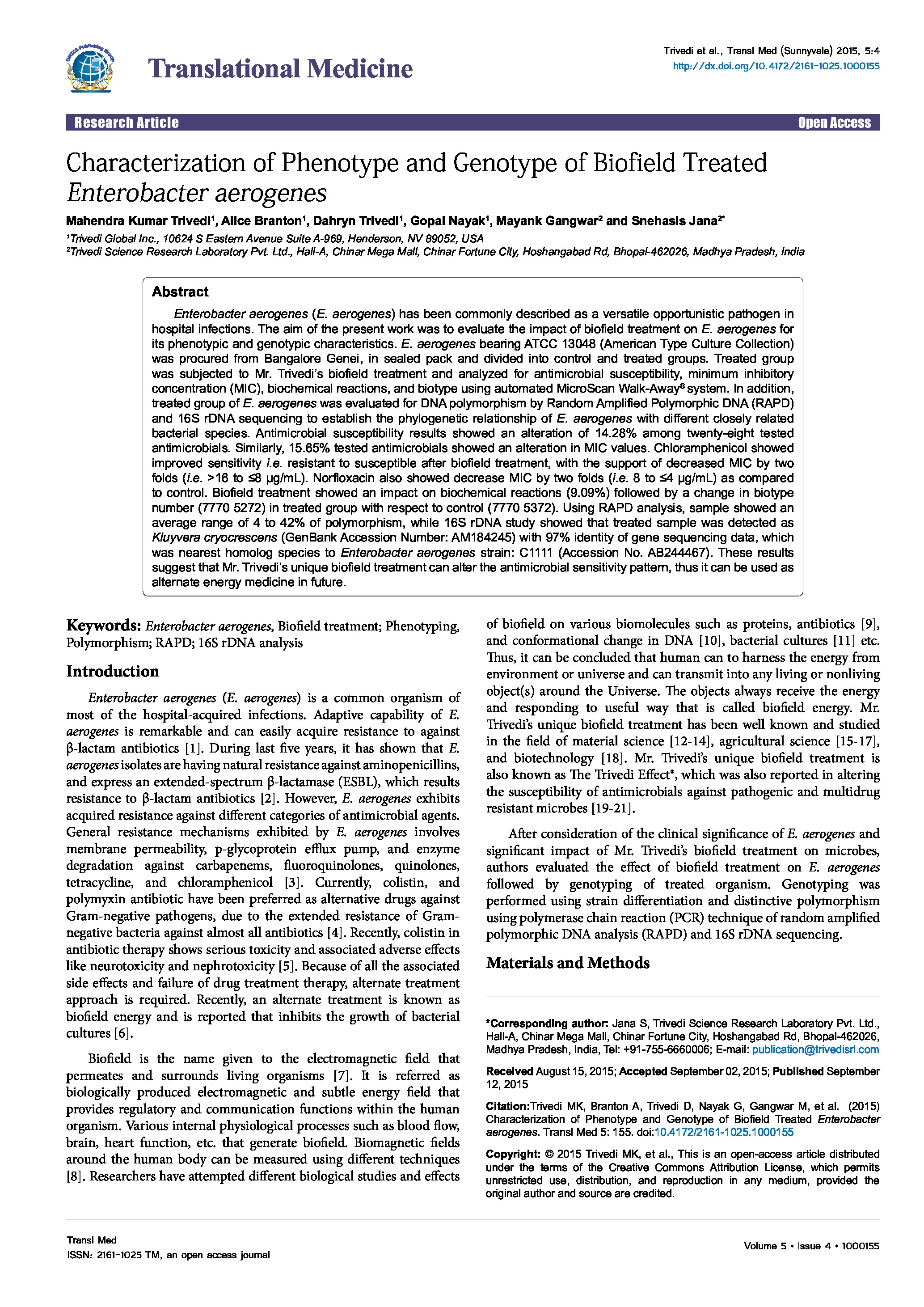Date of upload:
21.12.2016
Co-author:
Mahendra Kumar Trivedi, Alice Branton, Gopal Nayak, Khemraj Bairwa, Snehasis Jana
Abstract:
SFRE 199-1 medium (SFRE-M) is important mammalian cell culture medium, used for the culture of primary cells of mammals such as baboon kidney cells. The present study was attempted to evaluate the impact of biofield energy treatment on the physical, thermal and spectral properties of SFRE-M. The study was accomplished in two groups; one was set as control while another was subjected to Mr. Trivedi’s biofield energy treatment and coded as treated group. Subsequently, the control and treated samples were analyzed using various analytical techniques. The CHNO analysis showed about 2.16, 4.87, and 5.89% decrease in percent contents of carbon, hydrogen, and oxygen, respectively; while 9.49% increase in nitrogen contents of treated sample as compared to the control. X-ray diffraction (XRD) analysis showed 7.23% decrease in crystallite size of treated sample as compared to the control. The thermogravimetric analysis (TGA) analysis showed the increase in onset temperature of thermal degradation by 19.61% in treated sample with respect to the control. The control sample showed the 48.63% weight loss during the thermal degradation temperature (Tmax) while the treated sample showed only 13.62% weight loss during the Tmax. The differential scanning calorimetry (DSC) analysis showed the 62.58% increase in the latent heat of fusion of treated sample with respect to the control sample. The Fourier transform infrared spectroscopy (FT-IR) spectrum of treated SFRE-M showed the alteration in the wavenumber of C-O, C-N and C-H vibrations in the treated sample as compared to the control. Altogether, the XRD, TGA-DTG, DSC, and FT-IR analysis suggest that Mr. Trivedi’s biofield energy treatment has the impact on physical, thermal and spectral properties of SFRE-M. The treated SFRE-M was more thermal stable than the control SFRE-M and can be used as the better culture media for mammalian cell culture.




